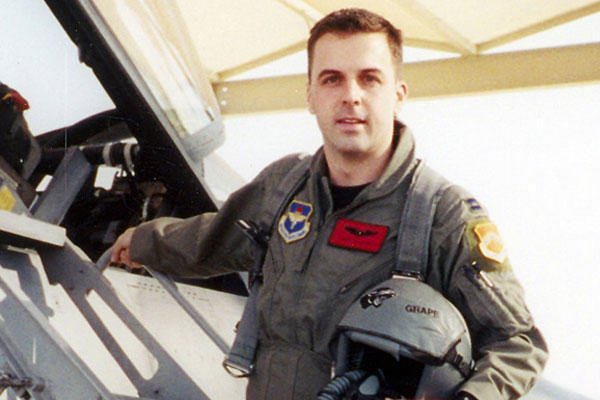WASHINGTON -- Additional remains of an Air Force pilot who died in combat in 2006 in Iraq have been found, service officials announced Nov. 19.
Maj. Troy Gilbert was killed when his F-16C Fighting Falcon crashed 20 miles northwest of Baghdad, Iraq Nov. 27, 2006, while engaged in support of coalition ground combat operations.
Partial remains were recovered and buried with full honors at a funeral Dec. 11, 2006 at Arlington National Cemetery.
"We have prayed for this for almost seven years, and we've never given up hope nor will we ever give up hope," said Ginger Gilbert-Ravella, former wife of Maj. Gilbert. "We have always known finding Troy's remains would be akin to finding a needle in a haystack or a grain of sand at the beach. Though our deepest desire is that his entire body would be returned to the U.S., we are grateful for this."
At the family's request, the Air Force requested a search for additional remains be re-opened, which was approved by the undersecretary of defense. This cleared the way for the Defense Prisoner of War/Missing Personnel Office, or DPMO, to continue searching in cooperation with the Iraqi government.
"I am grateful to the tireless efforts of our nation's military and its leaders as they have continued to make Troy's case a priority," Gilbert-Ravella said. "We are thankful to those who did the right thing in turning his remains over to the U.S. and ultimately our family. We are thankful to the men and women who have lost life and limb in pursuit of helping the country of Iraq seek democracy and order. I believe we can see the fruits of those sacrifices today."
Then Secretary of Air Force Michael Donley said, "We honor the ultimate sacrifice Major Gilbert made for our nation. His family deserves nothing less than our best effort to recover his remains and return them to his loved ones."
Additional remains were recovered by DPMO and the Air Force received them in September 2012. They were positively identified by the Armed Forces Medical Examiner as Gilbert's remains. Those remains will be interred at Arlington National Cemetery along with the remains originally recovered in 2006.
According to the Air Force Mortuary Affairs Operations Commander Col. John M. Devillier, notification was delayed regarding the remains found in 2012 in hopes that additional remains would be recovered.
When it was determined that additional remains may not be forthcoming, the family was notified, he said. That notification took place on Nov. 15.
According to a vignette in the Air Force's Portraits in Courage, Gilbert, a 12-year Air Force veteran, had already completed 21 combat sorties in the F-16 supporting ground forces under enemy fire. On one mission, he found and identified anti-Iraqi forces, then passed critical targeting information to Coalition forces, who attacked and eliminated the threat. In another time-sensitive mission, he killed 10 insurgents concealed in a palm grove with the pinpoint delivery of a laser-guided weapon.
"Major Gilbert was a guardian of freedom and justice, who made the ultimate sacrifice in the defense of our great nation and the Iraqi people," said Acting Secretary of the Air Force Eric Fanning. "Continuing the search for our fallen comrade demonstrates our promise to never leave an Airman behind."
Gilbert, who was posthumously awarded the Distinguished Flying Cross with Valor, deployed in September 2006 from Luke Air Force Base, Ariz., to the 332nd Air Expeditionary Wing, Balad Air Base, Iraq. He was assigned as the 332nd Expeditionary Operations Group chief of standardization and evaluation. On the day of the accident, he was flying with the 524th Expeditionary Fighter Squadron.
"We are confident the U.S. military will continue the task at hand to fully recover Troy's remains," Gilbert-Ravella said. "But today is a day to celebrate and remember the promise that was made to leave no one behind on the field of battle."






























